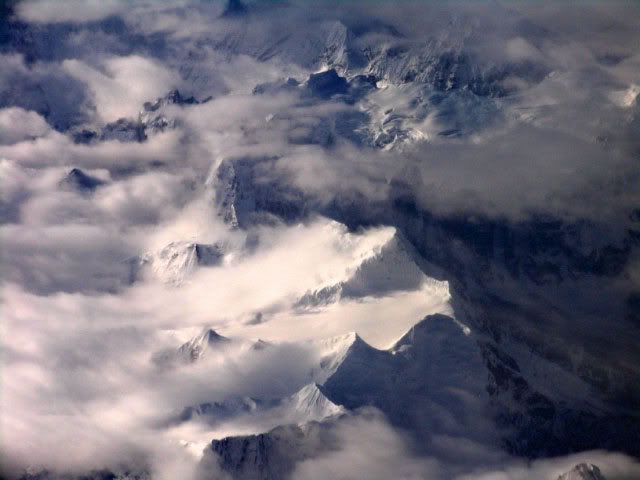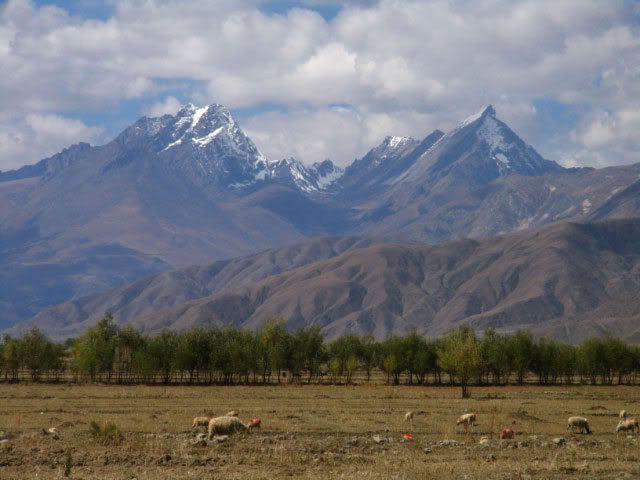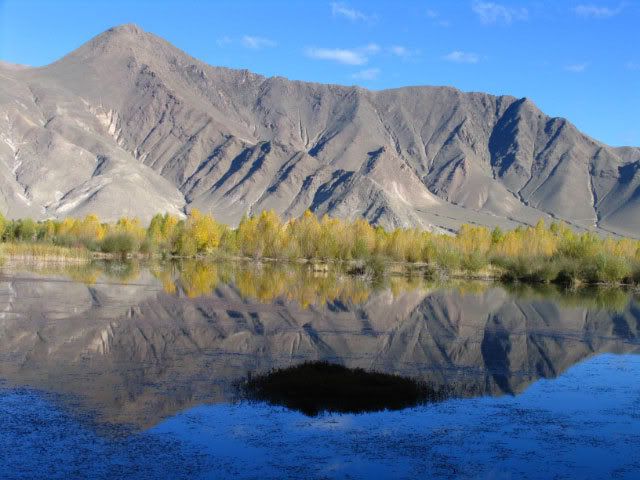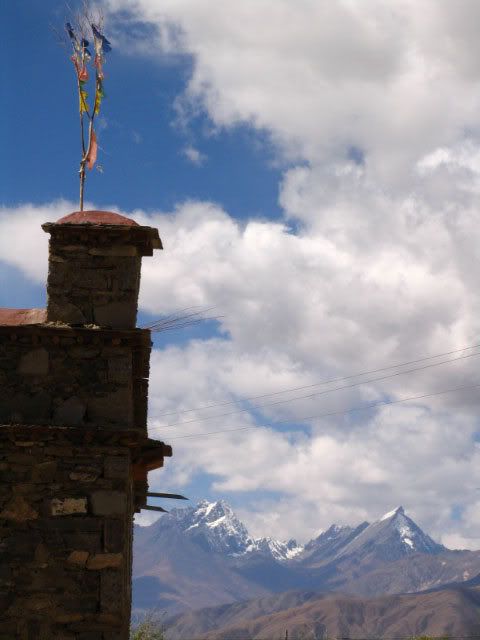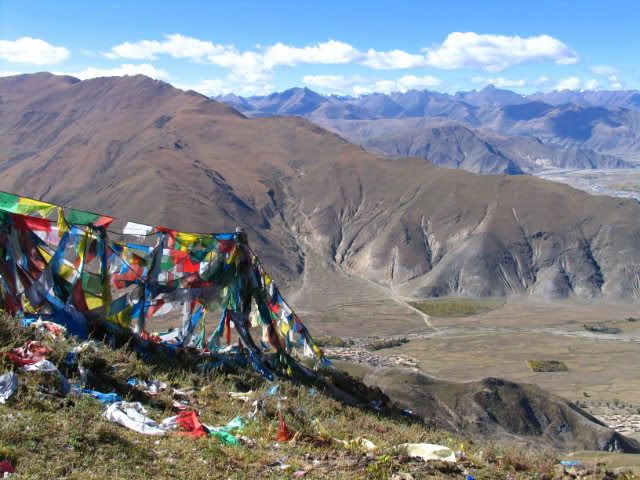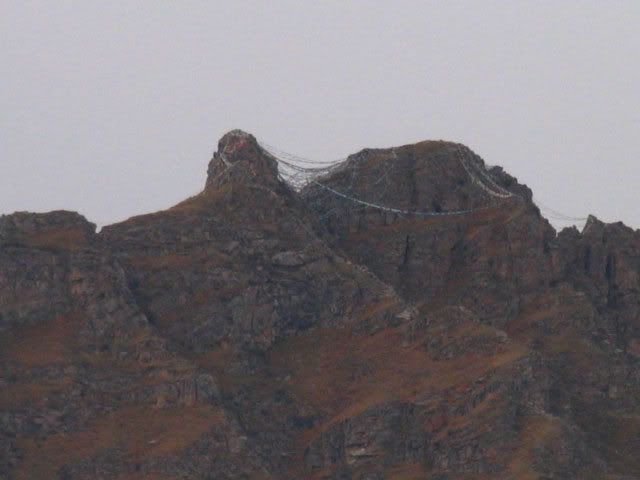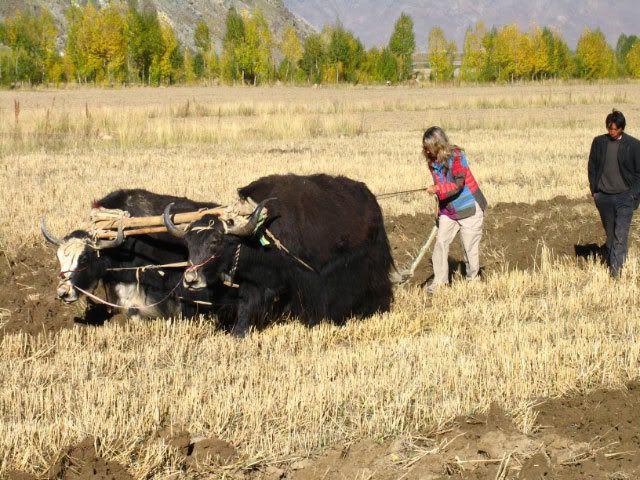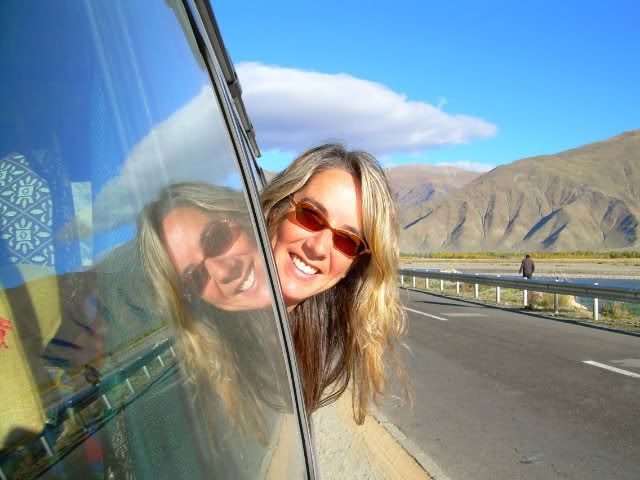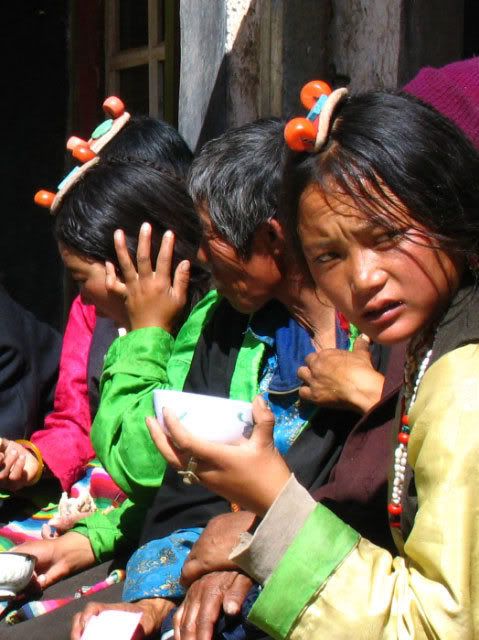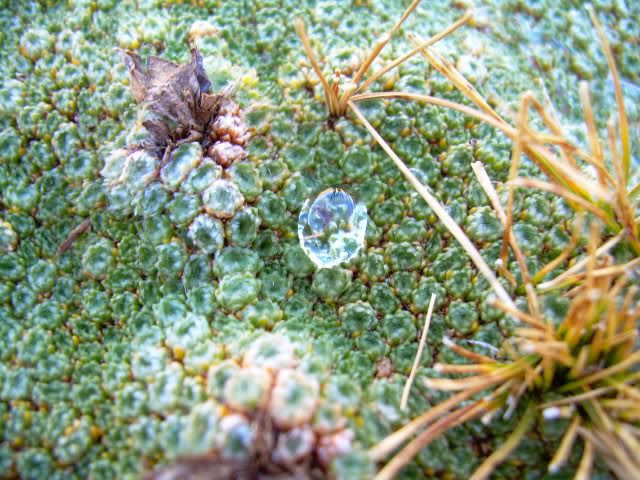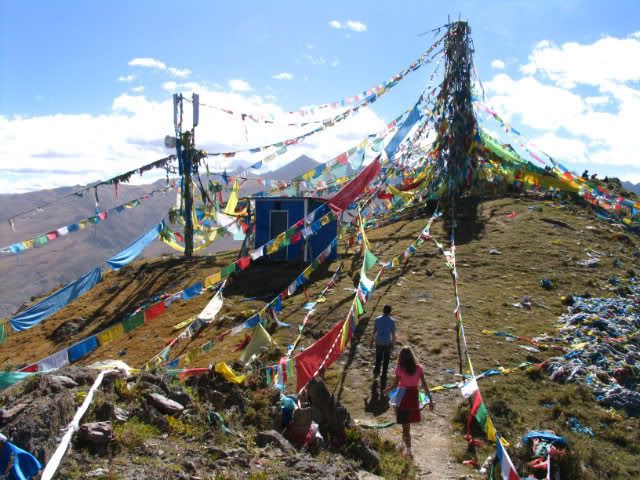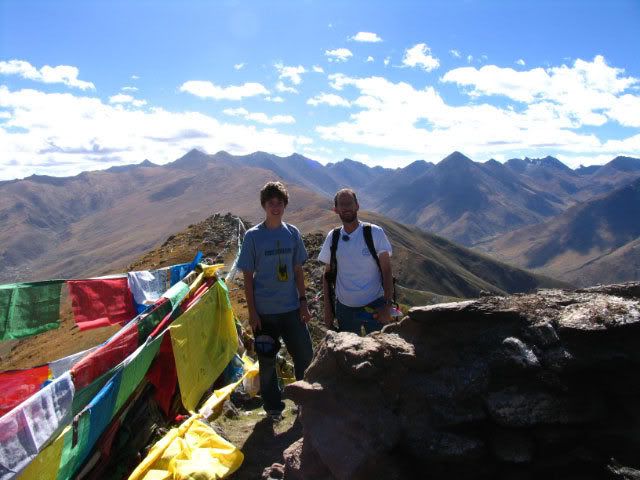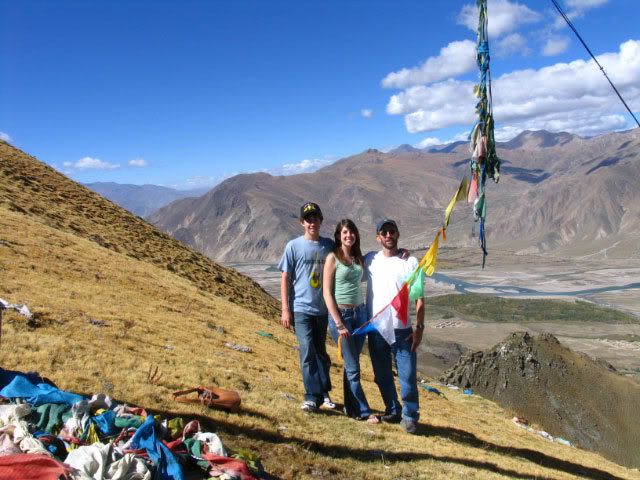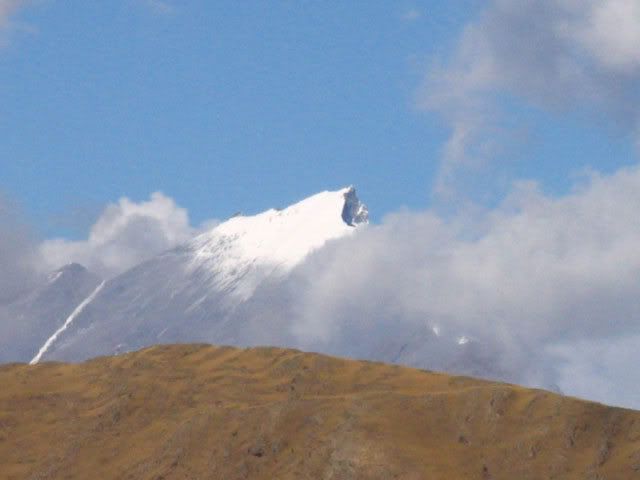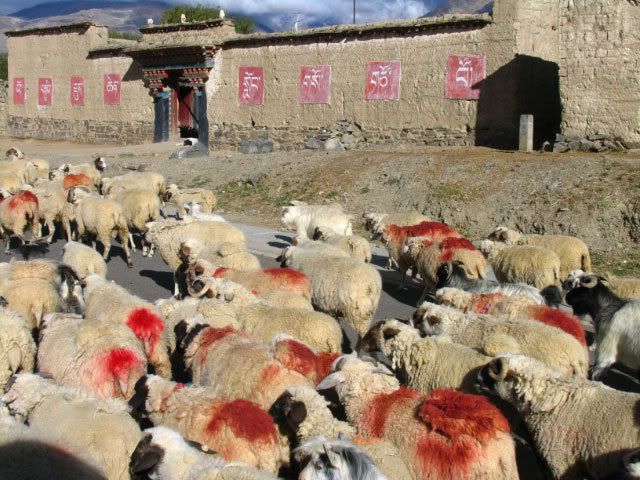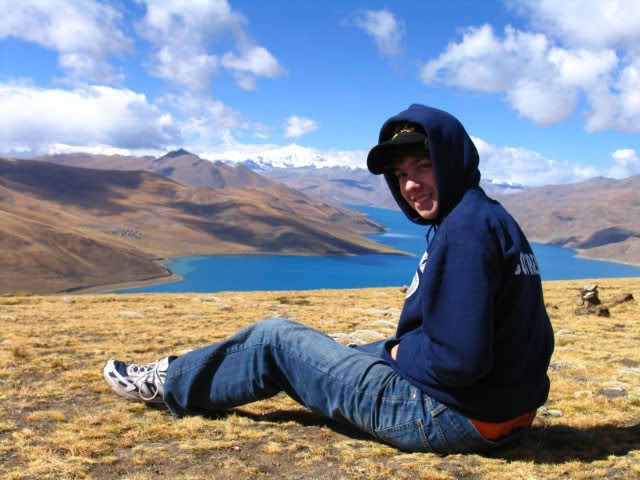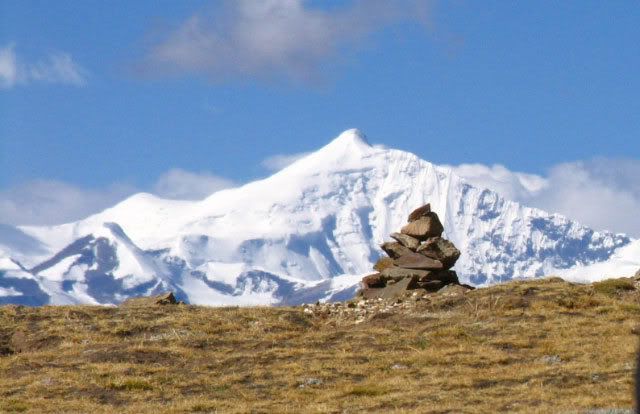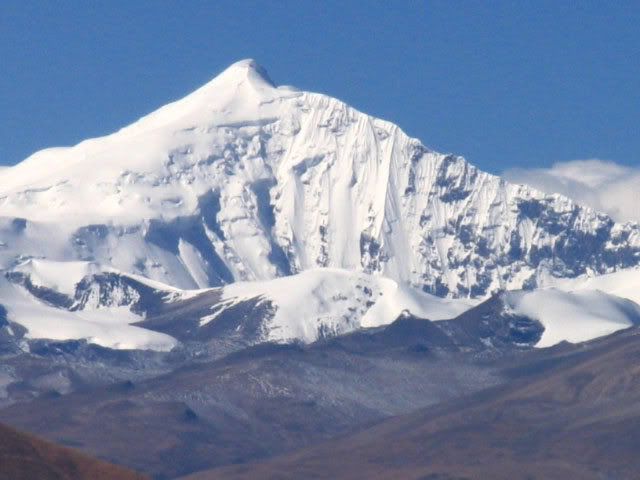Lhasa, our Shangri-la (rc)
Lhasa, Tibet

A truly incredible place. One step off the plane and we were doing something we hadn't done in over a month: reaching for our sunglasses. One more step into the crisp fall air, sunshine, blue sky and mountain landscape assured us our decision to spend our week long October holiday here had been the right one.
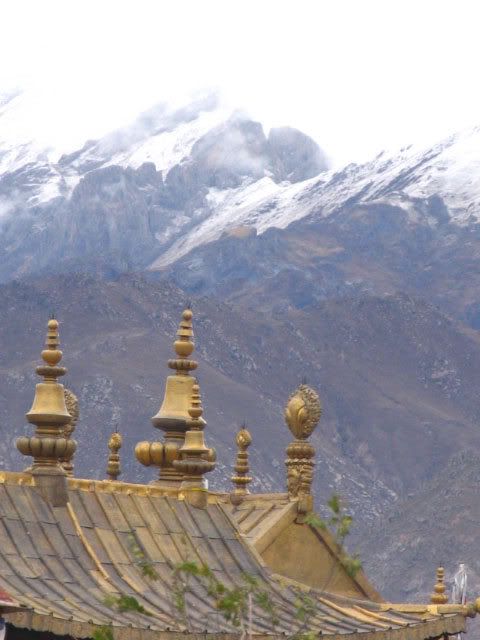
The view we started and ended each day with.
Trying to make travel arrangements with an agent in Hefei proved all but impossible. "It's too far" we were told and "very complicated and difficult to make arrangements. I think you should go somewhere closer." We saw where this was headed and knew that if we were going to make it there, we were on our own. So backed by our support and a great deal of determination, Tom took over. A few days later, days filled with e-mails and phone calls too numerous to mention, the task was done. Despite the continued warnings from others of the dangers awaiting us at an elevation of 11,500 ft.: altitude sickness, headaches, nosebleeds, shortness of breath, cold temps. and swindlers, we were excited and undeterred. Sept. 30 couldn't get here soon enough.
Getting there was definitely a process and second only to cashing travelers checks before leaving. That small job lasted 3hrs., took us to 5 banks and involved 3 taxi rides! Just happy to have the money, we put that inconvenience out of our minds and headed home to pack. We had about as many connections to make as there are people in China so we were a bit nervous as we climbed in for our first taxi ride of the trip. Everything went smooth for us over the course of 2 flights, multiple taxi rides and a night in a hotel in Chengdu, Sichuan Province and we arrived in Lhasa needing to make just one final connection ... our shuttle ride into town. Scanning the handmade signs of the shuttle/taxi drivers near baggage claim for several minutes we finally saw a Tibetan man holding a "Mr. Tom" sign. Relief. The last connection had been made.
Forty-five minutes later we were being dropped at the Mandala Hotel, right in the historical heart of Lhasa. Surrounded by locals and yes, some westerners as well, we picked up our bags and checked into what we think was the best room in the hotel. The four of us were in a 3rd floor corner room, windows along two walls and our own bathroom and shower. Our view revealed the Barkhor, a maze of walkways and alleyways filled with market stalls lining the outside of the 7th century Jokhang Temple and the Potala Palace. The Potala, 400 ft. above Lhasa and nestled into Red Mountain, dates back to the 15th century.
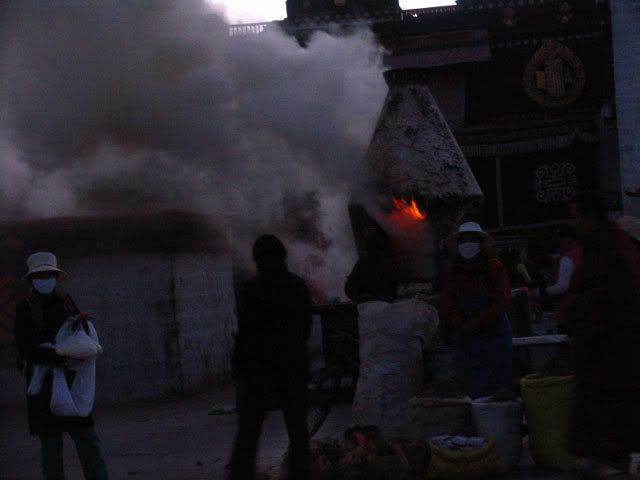
Incense was constantly burning outside the Temple from morning to night.
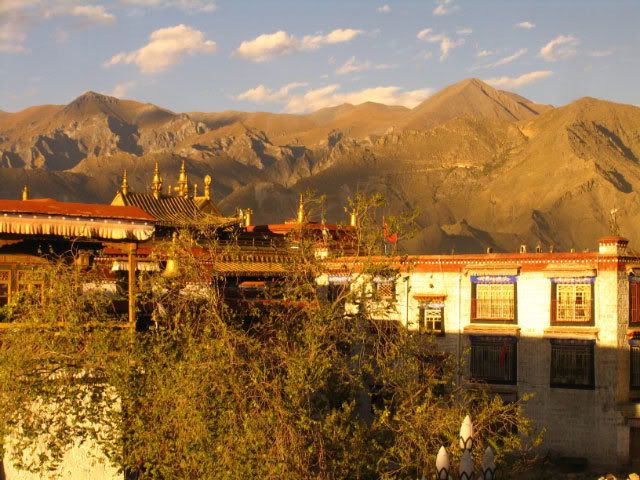
The rooftop view was stunning with the Himalayan foothills encircling Lhasa just as the Barkhor encircled the Jokhang.
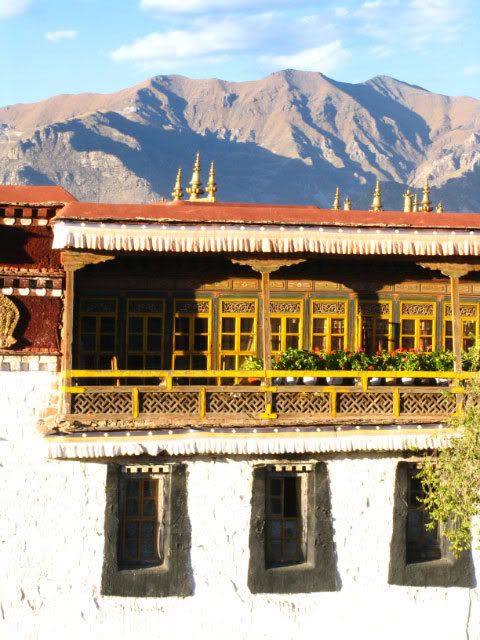
The Jokhang(above) and the Barkhor(below) warrant multiple visits.
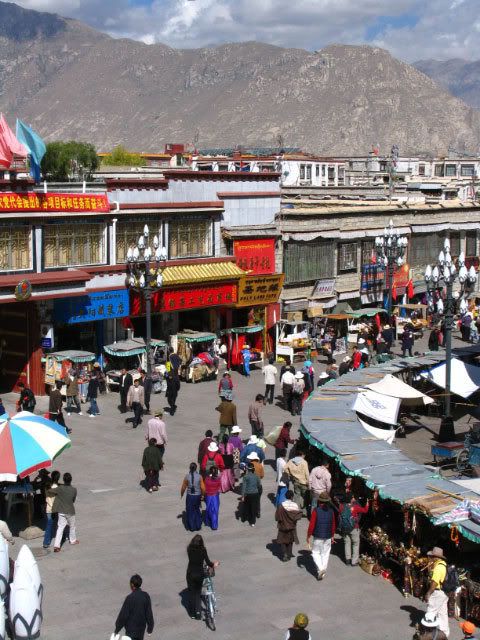
All of this and we hadn't even left our hotel! The life outside seemed much more intriguing than unpacking so with bags still half full we grabbed our room key and headed out. Unpacking could wait. The Barkhor couldn't.
What we entered into was a feast for the eyes. People all ages laughing, bargaining, praying and walking, 99% of them in the same direction. Strange we thought, how come no one else is going the way we are? We saw prayer wheels in the hands of old and young alike all being spun in the same clockwise direction. Stopping to admire the ornate prayer wheels of a nearby vendor, he explained that the prayers were spoken while spinning the wheel and walking in a continuous clockwise direction. So this explained the traffic flow. It was amazing to watch and we remained enamored by it on the ensuing days of our stay.
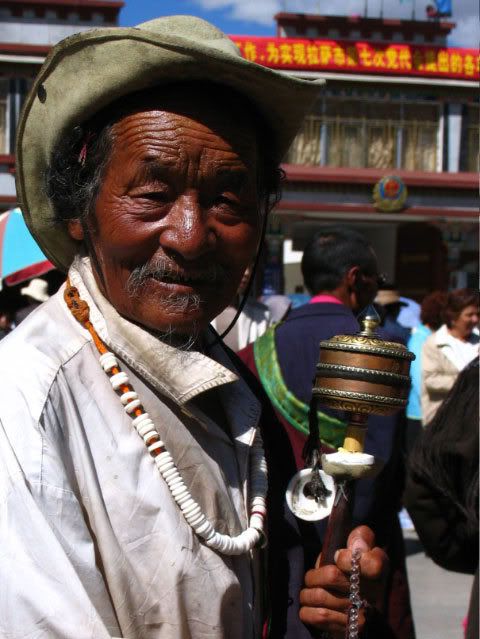
Local Tibetans walking the Barkhor with their prayer wheels.
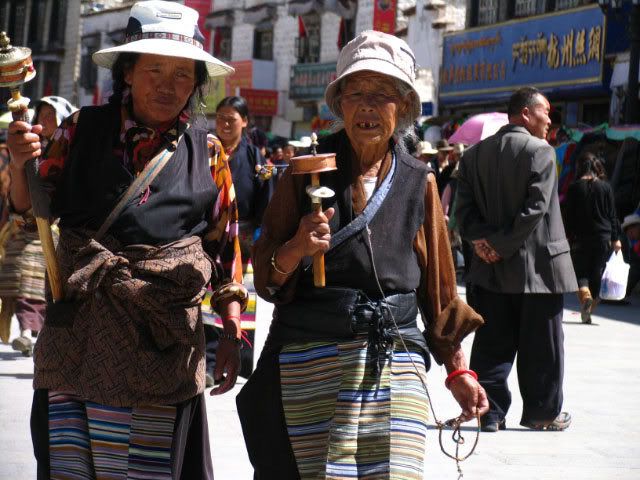
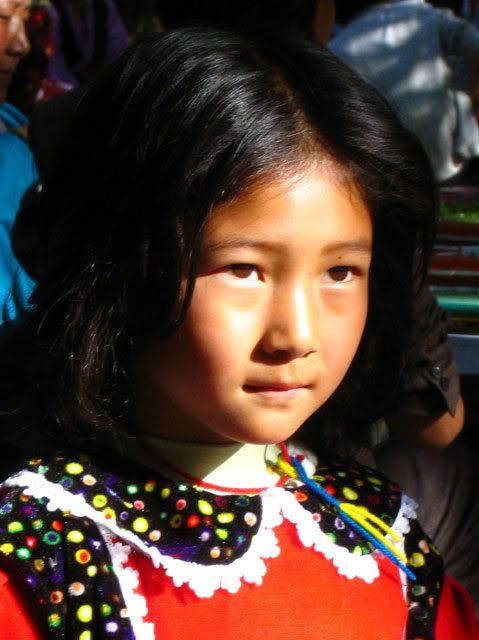
How can you ignore a photo like this?
Intertwined with all of this were pilgrims making their pilgrimage to the Jokhang, the holiest of all Buddhist temples. Before entering the temple they prostrate, again in a clockwise direction, around the Barkhor circuit. Usually clad in long pants and sleeves and accompanied by two wooden slabs serving as hand protectors, they spend no less than the better part of a day making making the loop. Black smudges on their foreheads and noses from the 1/2 mile flagstone path seemed to serve as a sense of pride for some. There's a respect that accompanies the Barkhor, a reverence that exists in the midst of the hustle and bustle.
Monks chant, pilgrims prostrate, locals walk with prayer wheels, tourists and locals exchange greetings and laughter while bargaining over mementos of this enchanting haven so far from the life we know.
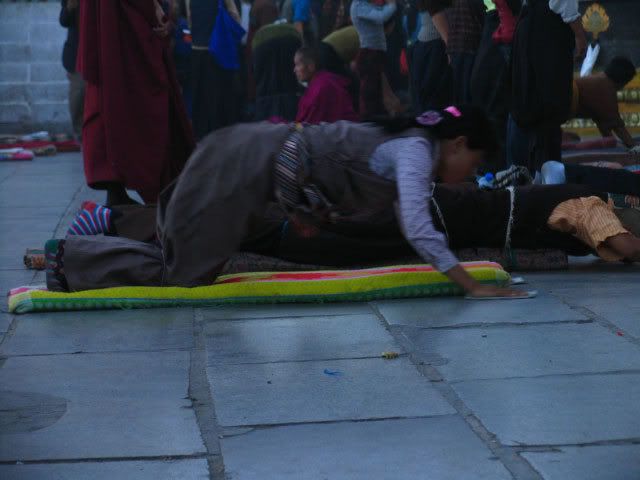
Pilgrims prostrating in front of the Jokhang Temple.
The Tibetan people are quick to make eye contact and smile. During our interactions smiles increased as we spoke the few Tibetan phrases we had learned. Traditional dress is common among all ages while modern clothing can be easily seen as well, serving to create a rich blend of old and new.
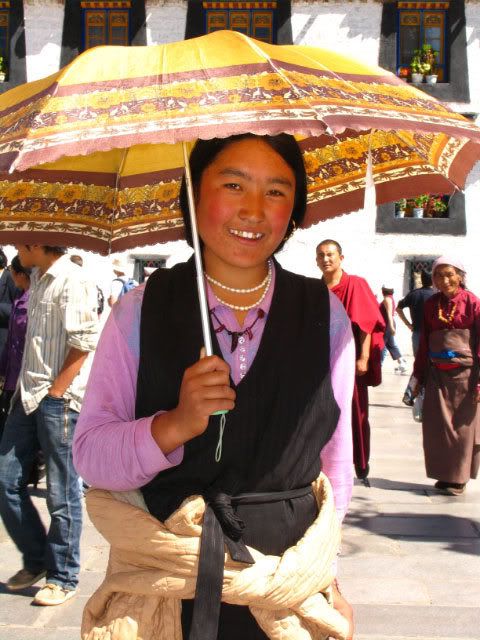
A local woman happy to let us take her picture.
There was simply no end to the opportunities for "people" shots causing our camera to work overtime. Dark faces highlighted by rosy cheeks, kind eyes and braided hair never grew old. Nor did the throngs of people in the market or the dusty green rickshaws lining each street. Capturing this was a fun challenge which we set out to meet with enthusiasm on a daily basis.
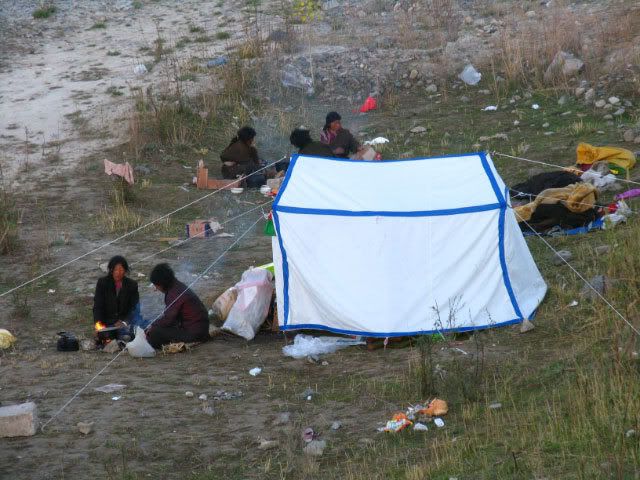
People camping out while making their pilgrimage to the Jokhang.
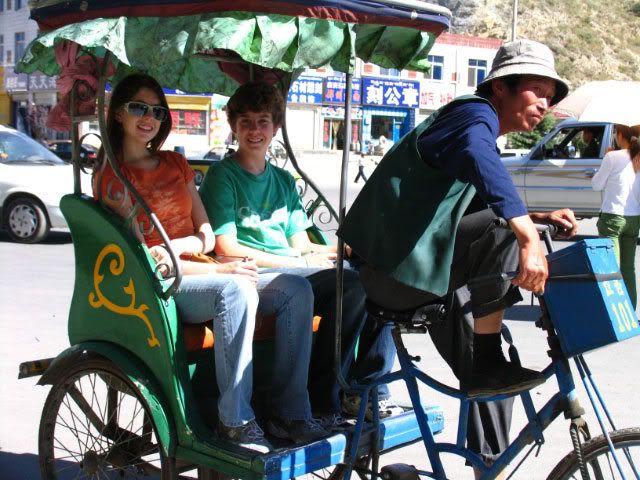
Rickshaws were as common as taxis. Talk about strong leg muscles!
We found out early on that yak is synonymous with Lhasa. These hearty animals are roaming the fields, pulling the plows and gracing dinner tables. No restaurant menu would be complete without a multitude of yak offerings and sitting on the rooftop diner of our hotel we enjoyed a number of them throughout the week: yak burgers, yak sizzlers, yak enchiladas, yak fried rice, yak momos, yak stroganoff, yak topped with orange juice and even yak kebabs. Making full use of what this animal has to offer, there was also yak butter and yak tea. It seemed to please our palettes in ways the cow intestine of a few weeks ago failed to do. Finding a place serving pancakes for breakfast kept us to western fare each morning. Our waitress was a bit taken aback the morning we ordered six of them, all banana. Limited kitchen facilities kept the cook from making more than one at a time so we were happy not to be in a rush. That morning the pancake procession lasted 20-25 minutes bringing giggles and looks of confusion from the wait staff. Their reaction convinced us this was not a common occurrence. I wonder how yak pancakes would be?
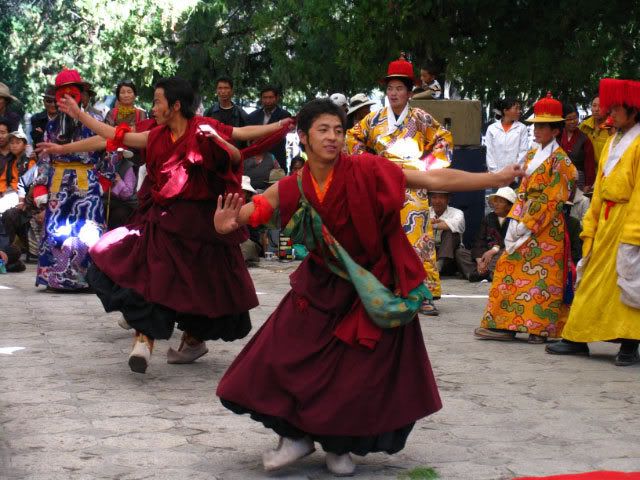
Traditional dancers at the National Holiday celebration, Oct. 1.
Friendly people, lively markets, chanting monks outside the Jokhang, spinning prayer wheels, pilgrims prostrating along the Barkhor, beggars along its edge, rickshaw laden streets and prayer flag strewn mountains are just some of the images that will remain with us for years to come.

Beggars outside the Potala Palace.
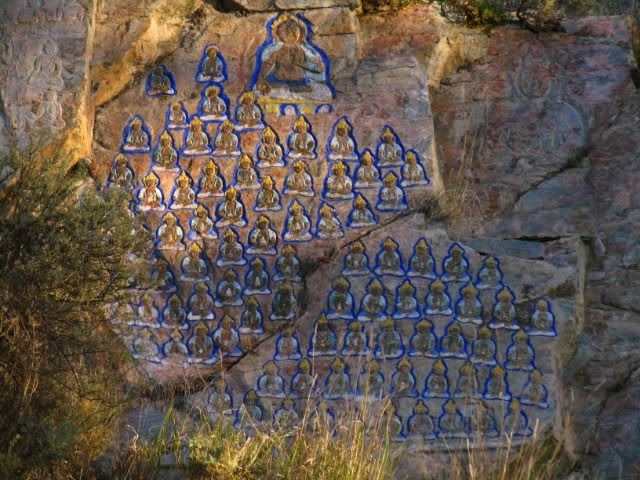
Buddhas, Buddhas everywhere!
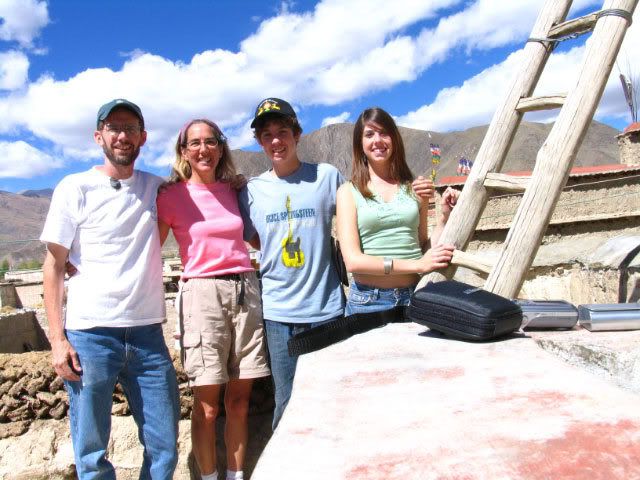
This is the Lhasa we'll remember. The Lhasa we can't wait to return to.
